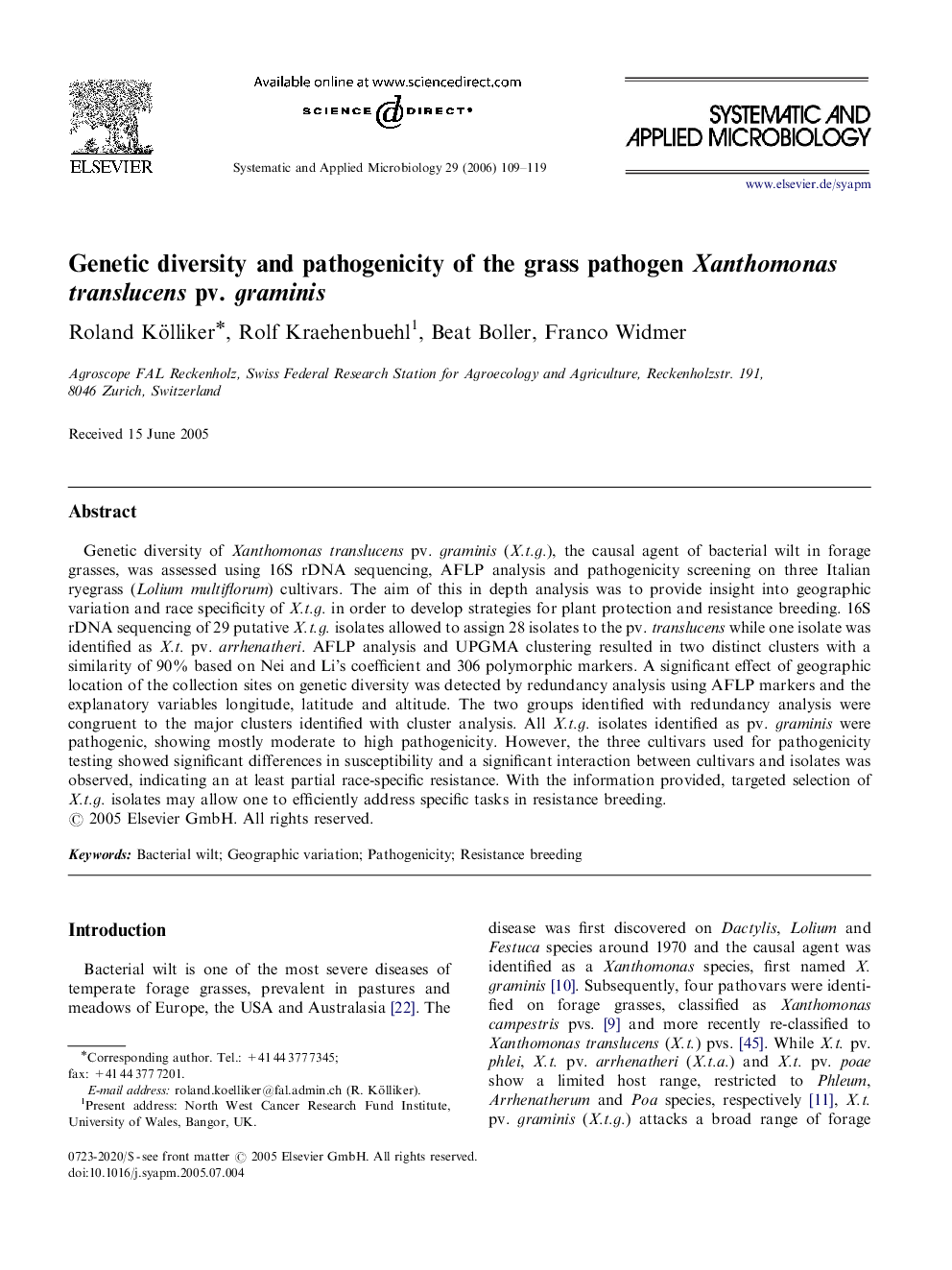| Article ID | Journal | Published Year | Pages | File Type |
|---|---|---|---|---|
| 2063570 | Systematic and Applied Microbiology | 2006 | 11 Pages |
Genetic diversity of Xanthomonas translucens pv. graminis (X.t.g.), the causal agent of bacterial wilt in forage grasses, was assessed using 16S rDNA sequencing, AFLP analysis and pathogenicity screening on three Italian ryegrass (Lolium multiflorum) cultivars. The aim of this in depth analysis was to provide insight into geographic variation and race specificity of X.t.g. in order to develop strategies for plant protection and resistance breeding. 16S rDNA sequencing of 29 putative X.t.g. isolates allowed to assign 28 isolates to the pv. translucens while one isolate was identified as X.t. pv. arrhenatheri. AFLP analysis and UPGMA clustering resulted in two distinct clusters with a similarity of 90% based on Nei and Li's coefficient and 306 polymorphic markers. A significant effect of geographic location of the collection sites on genetic diversity was detected by redundancy analysis using AFLP markers and the explanatory variables longitude, latitude and altitude. The two groups identified with redundancy analysis were congruent to the major clusters identified with cluster analysis. All X.t.g. isolates identified as pv. graminis were pathogenic, showing mostly moderate to high pathogenicity. However, the three cultivars used for pathogenicity testing showed significant differences in susceptibility and a significant interaction between cultivars and isolates was observed, indicating an at least partial race-specific resistance. With the information provided, targeted selection of X.t.g. isolates may allow one to efficiently address specific tasks in resistance breeding.
